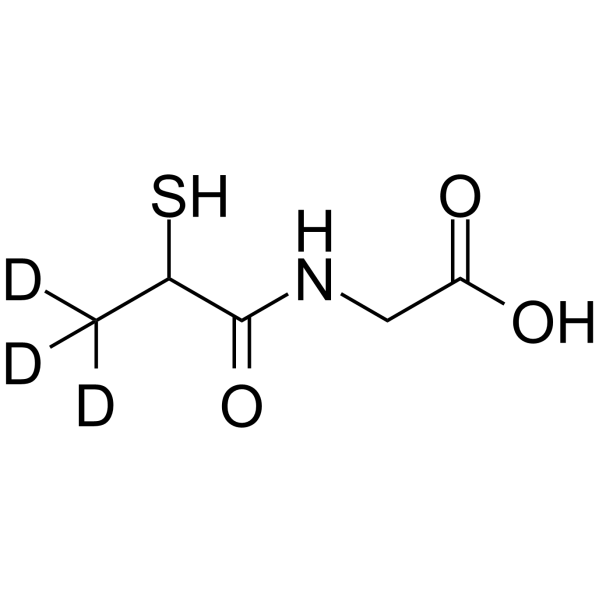Tiopronin-d3
Modify Date: 2024-04-08 11:45:51

Tiopronin-d3 structure
|
Common Name | Tiopronin-d3 | ||
|---|---|---|---|---|
| CAS Number | 1189700-74-0 | Molecular Weight | 166.21 | |
| Density | N/A | Boiling Point | N/A | |
| Molecular Formula | C5H6D3NO3S | Melting Point | N/A | |
| MSDS | N/A | Flash Point | N/A | |
Use of Tiopronin-d3Tiopronin-d3 is the deuterium labeled Tiopronin. Tiopronin is a diffusible antioxidant, an antidote to heavy metal poisoning and a radioprotective agent. Tiopronin can control the rate of cystine precipitation and excretion and has the potential for cystinuria, rheumatoid arthritis and hepatic disorders[1][2]. |
| Name | Tiopronin-d3 |
|---|
| Description | Tiopronin-d3 is the deuterium labeled Tiopronin. Tiopronin is a diffusible antioxidant, an antidote to heavy metal poisoning and a radioprotective agent. Tiopronin can control the rate of cystine precipitation and excretion and has the potential for cystinuria, rheumatoid arthritis and hepatic disorders[1][2]. |
|---|---|
| Related Catalog | |
| In Vitro | Stable heavy isotopes of hydrogen, carbon, and other elements have been incorporated into drug molecules, largely as tracers for quantitation during the drug development process. Deuteration has gained attention because of its potential to affect the pharmacokinetic and metabolic profiles of drugs[1]. |
| References |
| Molecular Formula | C5H6D3NO3S |
|---|---|
| Molecular Weight | 166.21 |